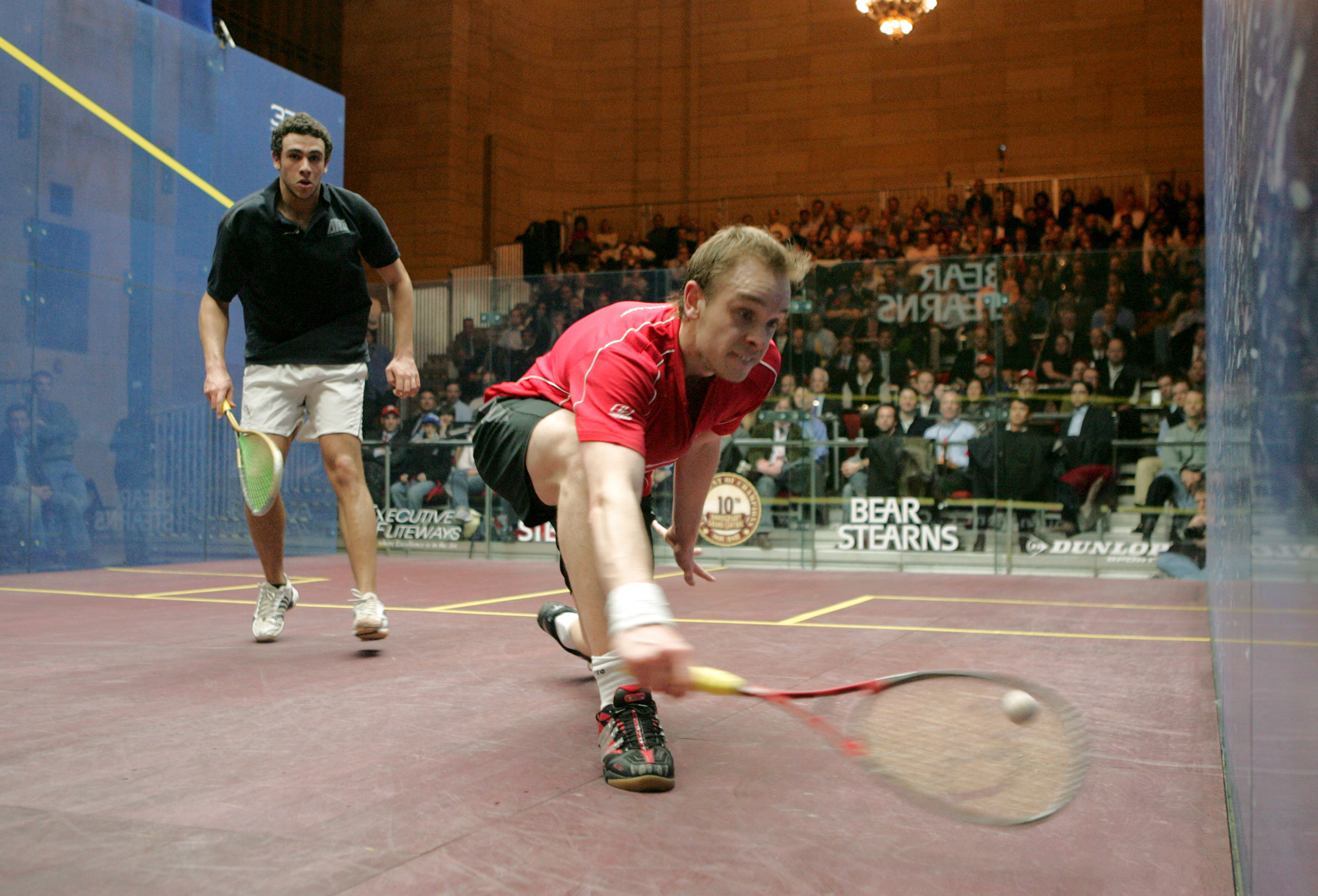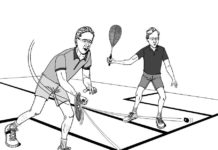By Rod Symington, WSF Referees and Rules Committee
There is perhaps no other aspect of the Rules that is as misunderstood as the concept of “fair view.” Because it is so misunderstood, players rarely invoke the Rule.
In fact, because the Rule is so widely misunderstood and so rarely used, there have been several attempts over the years to delete the Rule—but it has always survived.
“Fair view” is one of the four “freedoms” that the striker is entitled to. Most players are fully familiar with the other three freedoms: the requirement to give the striker direct access to the ball; the space to make a normal swing; and the room to hit the ball directly to any part of the entire front wall. If you do not give your opponent all of these three freedoms, you could lose the point.
But most players also do not understand what it means to give your opponent “fair view” of the ball.

The first thing we have to note is that we are talking of fair view, not perfect view. It is inevitable that within the narrow confines of a squash court the ball will occasionally pass behind your opponent’s body and that you will lose sight of it for a fraction of a second. If you are somewhere near mid-court (or further back), for example, you see the ball traveling 20 feet or so to the front wall and returning 20 feet from it. In other words, even if the ball crosses behind your opponent’s body, you have plenty of opportunity to see the ball fairly, and you cannot invoke the “fair view” rule for such momentary lapses.
Furthermore, while the ball is traveling to the front wall, you have no rights: You do not become the striker until the ball has rebounded off the front wall. It is at that point that your right to the four freedoms begins.
So when may the loss of “fair view” be invoked? In practice, only when the two players are fairly close to the front wall.
Imagine a scenario where you have hit a boast and your opponent runs towards the front wall to retrieve the ball. You follow up close behind, and your opponent attempts to drive the ball down the rail. Because of the position of your opponent’s body you cannot see the ball as it is hit to the front wall (which is perfectly legal), but the return comes off the front wall with pace and passes close to your opponent’s body—and thus you do not see the ball until the very last moment and cannot prepare your racquet for the next shot.
It is in such a situation that you would have the right to claim that you had not been given “fair view” of the ball.
So is it a stroke or a let? In all cases it will be a let—for the obvious reason that, since you could not see the ball, you could not have been ready to hit it. (If you had been ready to hit it, you would be entitled to the stroke—but then you wouldn’t need to invoke the “fair view” rule.) In invoking lack of “fair view,” you are implying that you were not able to get ready to hit the ball, because you could not see it as it returned from the front wall.
Such situations are comparatively rare, but if they do occur, you should be ready to call, “Let, please” for lack of fair view—and be ready to explain the Rule to your opponent (or the Referee?), if you are asked “What for?”





